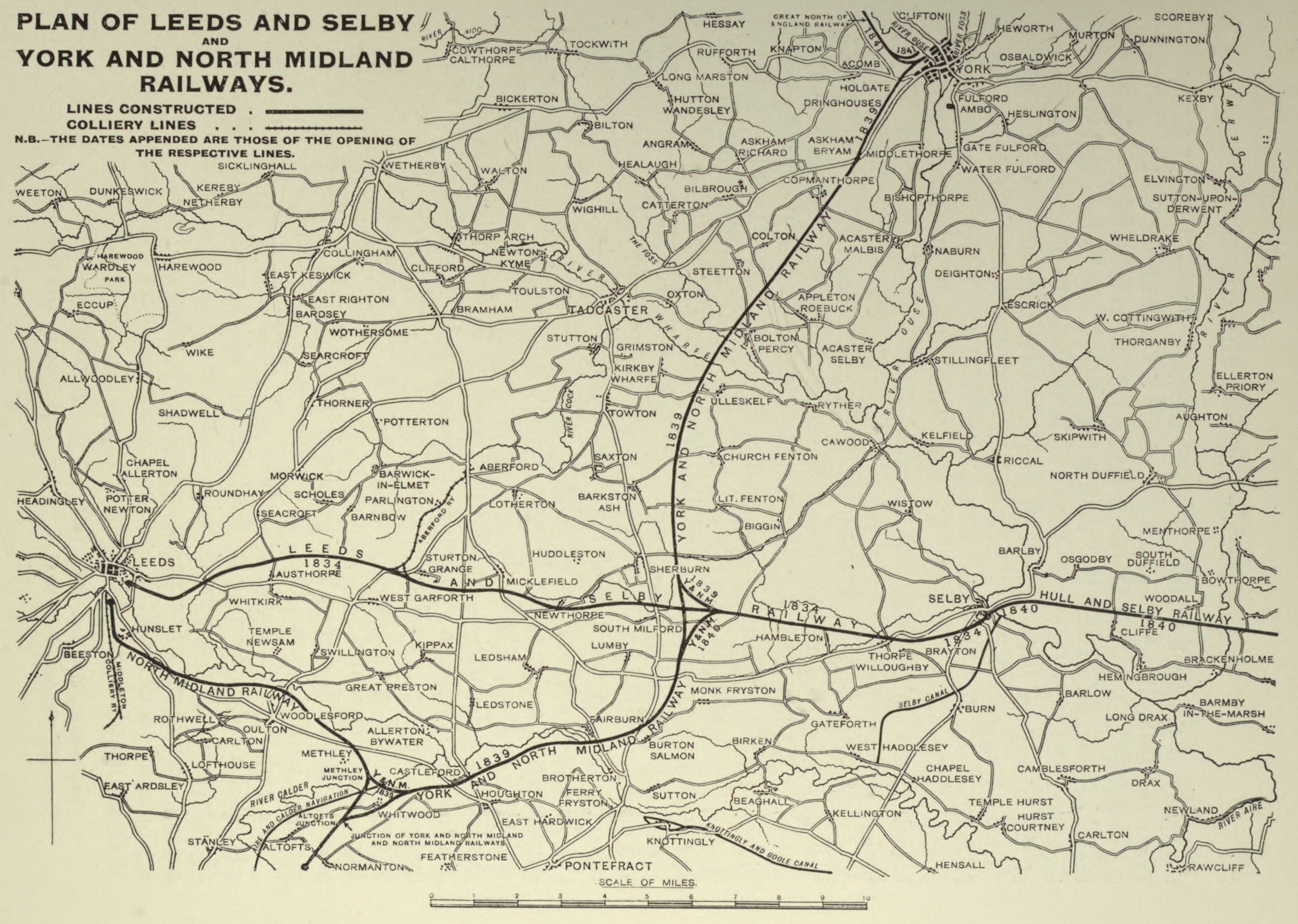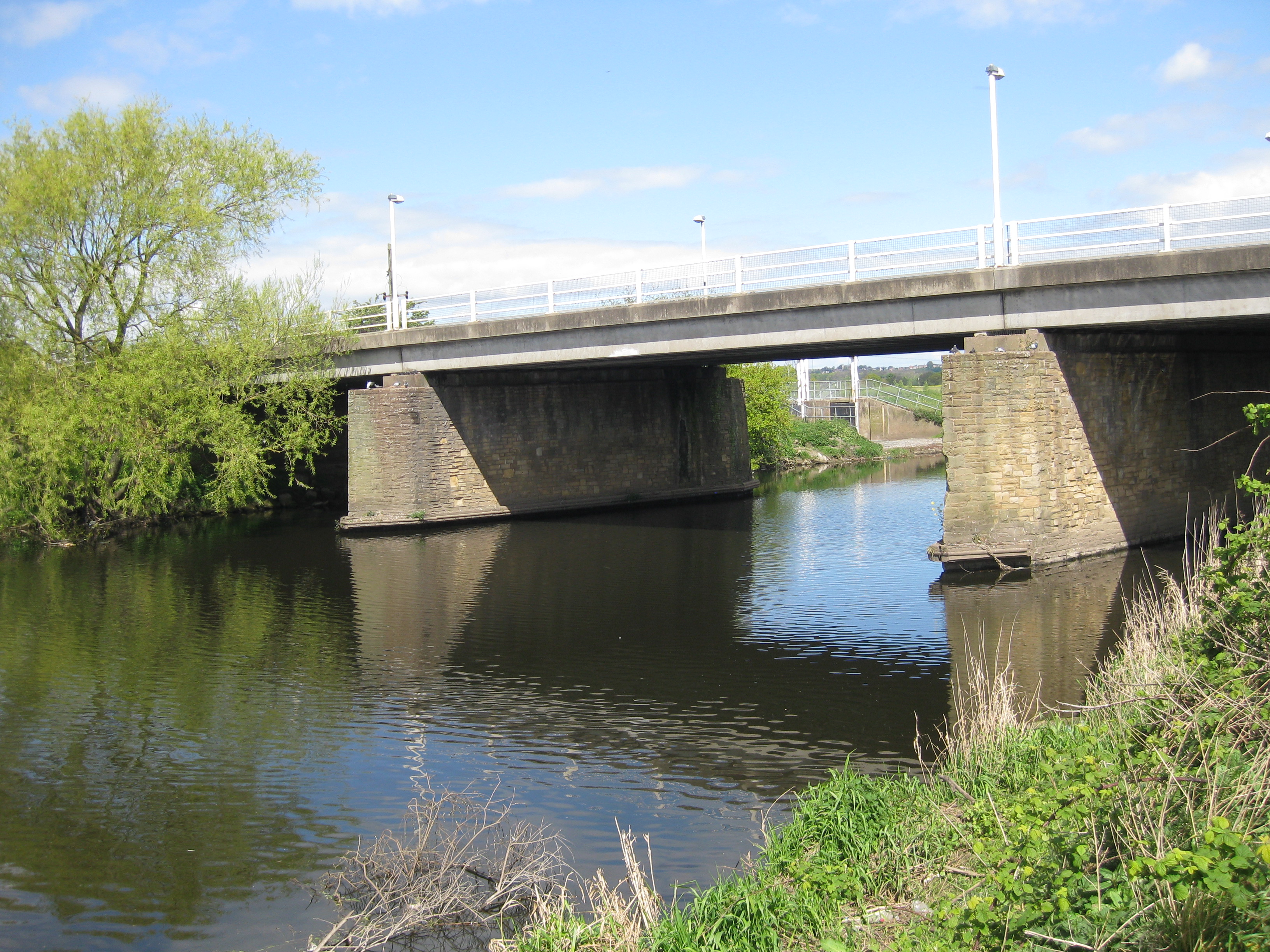|
Castleford Station
Castleford railway station serves the town of Castleford in West Yorkshire. It lies on the Hallam and Pontefract lines, south-east of Leeds. Although it was built originally as a through station, regular passenger services beyond Castleford towards York were discontinued in January 1970. Today, all trains calling at the station reverse here, arriving and departing from the former northbound platform 1. Platform 2 is currently out of use and inaccessible, though it was brought back into use temporarily during the Leeds First project in 2002; Transpennine services between York and Huddersfield were diverted to avoid engineering work in Leeds, routed via Church Fenton, Castleford and Wakefield Kirkgate. It may also be brought back into use on a more permanent basis to help accommodate extra peak hour services, if Network Rail proceed with plans mooted in the recent Yorkshire & Humberside RUS. The route from Church Fenton continues to be used for freight traffic, empty stoc ... [...More Info...] [...Related Items...] OR: [Wikipedia] [Google] [Baidu] |
Castleford
Castleford is a town within the City of Wakefield, West Yorkshire, England. It had a population of 45,106 at a 2021 population estimate. Historically in the West Riding of Yorkshire, to the north of the town centre the River Calder joins the River Aire and the Aire and Calder Navigation. It is located north east of Wakefield, north of Pontefract and south east of Leeds. Castleford is the largest town in the Wakefield district after Wakefield itself. The town is the site of a Roman settlement. Within the historical Castleford Borough are the suburbs of Airedale, Cutsyke, Ferry Fryston, Fryston Village, Glasshoughton, Half Acres, Hightown, Lock Lane, Townville, Wheldale and Whitwood. Castleford is home to the rugby league Super League team Castleford Tigers. History Castleford's history dates back to Roman times, archaeological evidence points to modern day Castleford being built upon a Roman army settlement which was called Lagentium (thought to mean 'The Place of the Sword ... [...More Info...] [...Related Items...] OR: [Wikipedia] [Google] [Baidu] |
Lancashire And Yorkshire Railway
The Lancashire and Yorkshire Railway (L&YR) was a major British railway company before the 1923 Grouping. It was incorporated in 1847 from an amalgamation of several existing railways. It was the third-largest railway system based in northern England (after the Midland and North Eastern Railways). The intensity of its service was reflected in the 1,650 locomotives it owned – it was by far the most densely-trafficked system in the British Isles with more locomotives per mile than any other company – and that one third of its 738 signal boxes controlled junctions averaging one every . No two adjacent stations were more than apart and its 1,904 passenger services occupied 57 pages in '' Bradshaw'', a number exceeded only by the Great Western Railway, the London and North Western Railway, and the Midland Railway. It was the first mainline railway to introduce electrification of some of its lines, and it also ran steamboat services across the Irish Sea an ... [...More Info...] [...Related Items...] OR: [Wikipedia] [Google] [Baidu] |
George Hudson
George Hudson (probably 10 March 1800 – 14 December 1871) was an English railway financier and politician who, because he controlled a significant part of the railway network in the 1840s, became known as "The Railway King"—a title conferred on him by Sydney Smith in 1844. Hudson played a significant role in linking London to Edinburgh by rail, carrying out the first major merging of railway companies (the Midland Railway) and developing his home city of York into a major railway junction. He also represented Sunderland in the House of Commons. Hudson's success was built on dubious financial practices and he frequently paid shareholders out of capital rather than money the company had earned. Eventually in 1849, a series of enquiries, launched by the railways he was chairman of, exposed his methods, although many leading the enquiries had benefited from and approved of Hudson's methods when it suited them. Hudson fell a long way, becoming bankrupt, and after losing his Sun ... [...More Info...] [...Related Items...] OR: [Wikipedia] [Google] [Baidu] |
North Midland Railway
The North Midland Railway was a British railway company, which opened its line from Derby to Rotherham (Masbrough) and Leeds in 1840. At Derby, it connected with the Birmingham and Derby Junction Railway and the Midland Counties Railway at what became known as the Tri-Junct Station. In 1844, the three companies merged to form the Midland Railway. Origin The East Midlands had for some years been at the centre of plans to link the major cities throughout the country. In Yorkshire, George Hudson was the Chairman of the York and North Midland Railway, a proposed line from York towards the industrial markets of Manchester and Liverpool. The new line would connect it, and the Manchester and Leeds Railway as part of a trunk route from the South and London to Yorkshire and the North East of England. Meanwhile, financiers in Birmingham, were looking to expand their system northwards. George Carr Glyn was the first Chairman of the new company, with George Stephenson appointed as engi ... [...More Info...] [...Related Items...] OR: [Wikipedia] [Google] [Baidu] |
Methley
Methley is a dispersed village in the City of Leeds metropolitan borough, south east of Leeds, West Yorkshire, England. It is located near Rothwell, Oulton, Woodlesford, Mickletown and Allerton Bywater. The Leeds City Ward is called Kippax and Methley. It is within the triangle formed by Leeds, Castleford and Wakefield, and between the confluence of the River Aire and River Calder. The latter is crossed by Methley Bridge, the A639 road, () about a mile south-east of the village. Location and history Today, the village is often described in terms of the area around Church Lane, Main Street and Pinfold Lane. However, the buildings on these streets largely date from the 20th century – and this area does not represent the original geographical centre of the village. The original village was established near to Saint Oswald's Church, and in particular along Church Side. This is reflected in the 17th- and 18th-century buildings along Churchside and parts of Watergate.Leeds Ci ... [...More Info...] [...Related Items...] OR: [Wikipedia] [Google] [Baidu] |
Normanton Railway Station
Normanton is the name of: England *Normanton, Derby *South Normanton, Derbyshire *Temple Normanton, Derbyshire * Normanton, Leicestershire * Normanton, Lincolnshire *Normanton, Rutland *Normanton, West Yorkshire **Normanton (UK Parliament constituency) (old) ** Normanton, Pontefract and Castleford (UK Parliament constituency) (new) **Normanton (rugby league), a former semi-professional club * Normanton, Wiltshire *Normanton le Heath, Leicestershire * Normanton on Soar, Nottinghamshire *Normanton-on-the-Wolds, Nottinghamshire *Normanton on Trent, Nottinghamshire Australia *Normanton, Queensland Other * Normanton incident – a maritime incident off the coast of Japan in 1886 * Earl of Normanton Earl of Normanton is a title in the Peerage of Ireland. It was created in 1806 for Charles Agar, 1st Viscount Somerton, Archbishop of Dublin. He had already been created Baron Somerton, of Somerton in the County of Kilkenny, in 1795 and Visco ... See also * Normantown (disambig ... [...More Info...] [...Related Items...] OR: [Wikipedia] [Google] [Baidu] |
North Eastern Railway (UK)
The North Eastern Railway (NER) was an English railway company. It was incorporated in 1854 by the combination of several existing railway companies. Later, it was amalgamated with other railways to form the London and North Eastern Railway at the Grouping in 1923. Its main line survives to the present day as part of the East Coast Main Line between London and Edinburgh. Unlike many other pre-Grouping companies the NER had a relatively compact territory, in which it had a near monopoly. That district extended through Yorkshire, County Durham and Northumberland, with outposts in Westmorland and Cumberland. The only company penetrating its territory was the Hull & Barnsley, which it absorbed shortly before the main grouping. The NER's main line formed the middle link on the Anglo-Scottish "East Coast Main Line" between London and Edinburgh, joining the Great Northern Railway near Doncaster and the North British Railway at Berwick-upon-Tweed. Although primarily a Northern ... [...More Info...] [...Related Items...] OR: [Wikipedia] [Google] [Baidu] |
Castleford Station
Castleford railway station serves the town of Castleford in West Yorkshire. It lies on the Hallam and Pontefract lines, south-east of Leeds. Although it was built originally as a through station, regular passenger services beyond Castleford towards York were discontinued in January 1970. Today, all trains calling at the station reverse here, arriving and departing from the former northbound platform 1. Platform 2 is currently out of use and inaccessible, though it was brought back into use temporarily during the Leeds First project in 2002; Transpennine services between York and Huddersfield were diverted to avoid engineering work in Leeds, routed via Church Fenton, Castleford and Wakefield Kirkgate. It may also be brought back into use on a more permanent basis to help accommodate extra peak hour services, if Network Rail proceed with plans mooted in the recent Yorkshire & Humberside RUS. The route from Church Fenton continues to be used for freight traffic, empty stoc ... [...More Info...] [...Related Items...] OR: [Wikipedia] [Google] [Baidu] |
Castleford Bus Station
Castleford Bus Station serves the town of Castleford, West Yorkshire, England. The bus station is owned and managed by West Yorkshire Metro. The bus station is situated in Castleford Town Centre off Albion Street and is approximately away from the town's railway station. The rebuilt station has 8 stands in a drive-in-reverse out format while the original station had 15 stands on four islands at the bus station. The main operator is Arriva Yorkshire New bus station The previous bus station had become rather outdated and had not seen the investment that others in West Yorkshire had, its replacement was a pending issue for the town for some time. Building works was due to begin in 2010 on a brand new bus/rail interchange situated at Castleford's rail station, however replacement was delayed. however the project was delayed and Metro and Wakefield Council are seeking funding from the Government for the work. In 2013, Metro and Wakefield Council drew up plans for a replacement ... [...More Info...] [...Related Items...] OR: [Wikipedia] [Google] [Baidu] |






_002.jpg)
